Ion Exchange Plant Cation Anion Ion Exchange System Guide
Ion Exchange Plant: Efficient Water Treatment Solution
An ion exchange plant removes or replaces specific ions in water or other liquids using ion exchange resins. These plants are essential for purifying water, treating wastewater, and chemical processes where ion removal or addition is required. Key components like resin beds, pumps, control valves, and regeneration systems work together to ensure the delivery of clean, treated water.
Depending on your effluent range requirements and individual purification needs, Haiyuan’s twin bed ion exchange system could be an ideal solution. Although our mixed bed deionization provides higher purity water, our twin bed exchangers deliver similar results without corrosion to copper, aluminum, and stainless steel. Haiyuan’s high-capacity twin bed exchangers are made up of strong cation and anion resins in a dual bed configuration, ensuring consistent quality and performance.
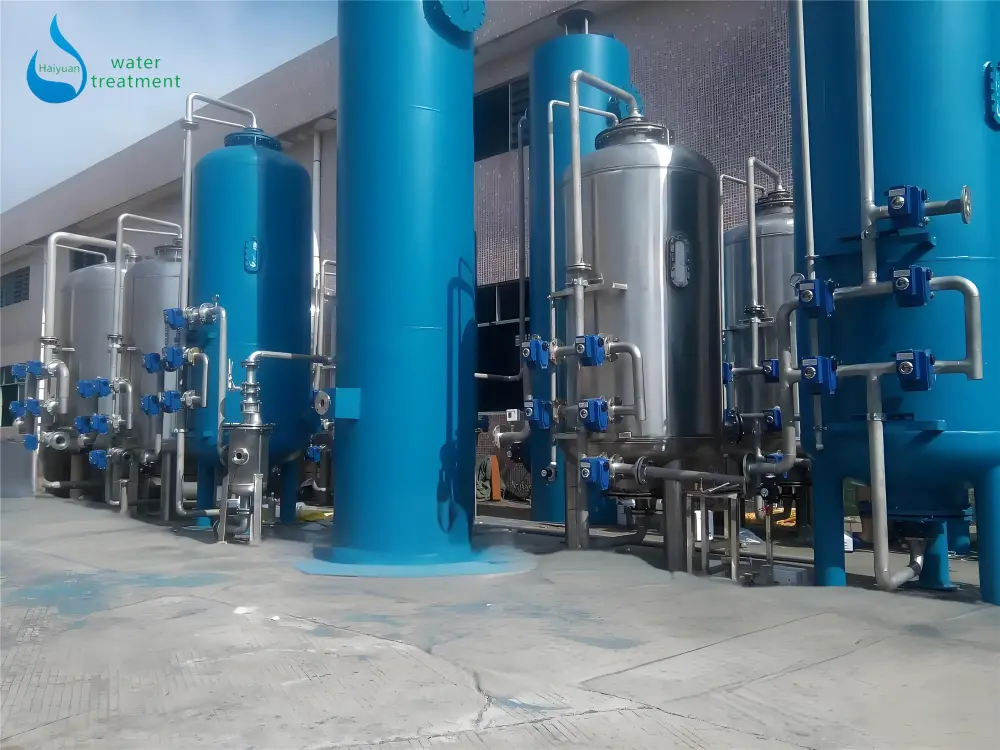
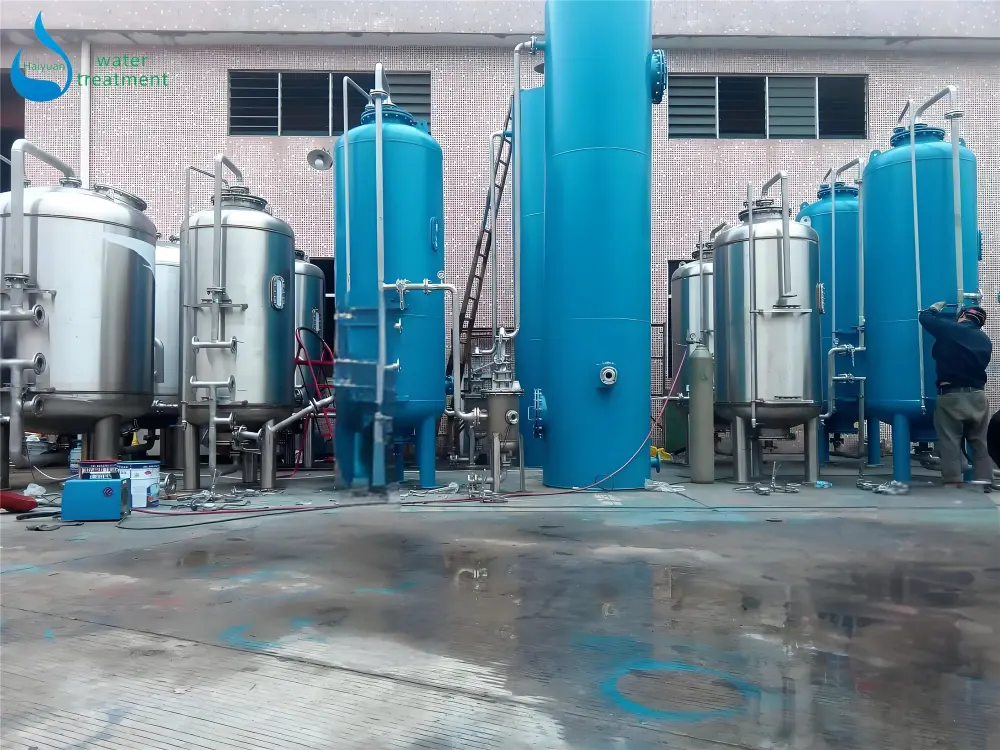
Ion Exchange Plant consists of the following key components:
-
Ion Exchange Resin Beds – Where the ion exchange process occurs.
-
Pumps – To move water through the system.
-
Control Valves – To regulate flow and pressure.
-
Regeneration System – To clean and restore the resin.
-
Monitoring System – To track performance and quality.
-
Feed Water Tank – Holds the incoming water to be treated.
| Tips: one gallon=3.785 liters, 1m3=1ton=1000 liters, GPS,GPM When designing, we ultimately select based on the hourly water output flow rate. |
||||||
| Different Water TDS(Total Dissolved Solids) compare and usage | ||||||
| Raw water/Application | Bottled water, | City tap water | Softener water | Industry use (1st level) |
Industry use (2nd level) |
Industry use (3rd level) |
| Bag water | ||||||
| TDS Range | 2-10ppm | 100-1000ppm | 0.03mmol | Conductivity Range: 1–0.1 μS/cm | Resitivity Range: 1—-10MΩ/cm | Resitivity Range: 10—-15MΩ/cm
Or more higher: 18 MΩ/cm |
| Direct Drinking | Yes | Yes/No | ||||
| Cooking, human | Yes | Yes | ||||
| consumption, washing | ||||||
| Irrigation, Industry, | Yes | Yes | ||||
| Animal Drinking | ||||||
| 1..Electricity supply:220V-480v, 50hz or 60hz,3 phases 2.Capacity: 500L/H to 50m3/hr. 20ft or 40ft containerized 3.Membranes :DOW(Dupont) or Toray or Vontron 4.UV sterilizer/Ozone generator, CIP washing system, anti-scale dosing system is for optionalFor inudustry use: Condutivity beteen range 1-0.15us/cm or Resitivity 10-18 megohm. Different industry have different water quality requriement. |
||||||
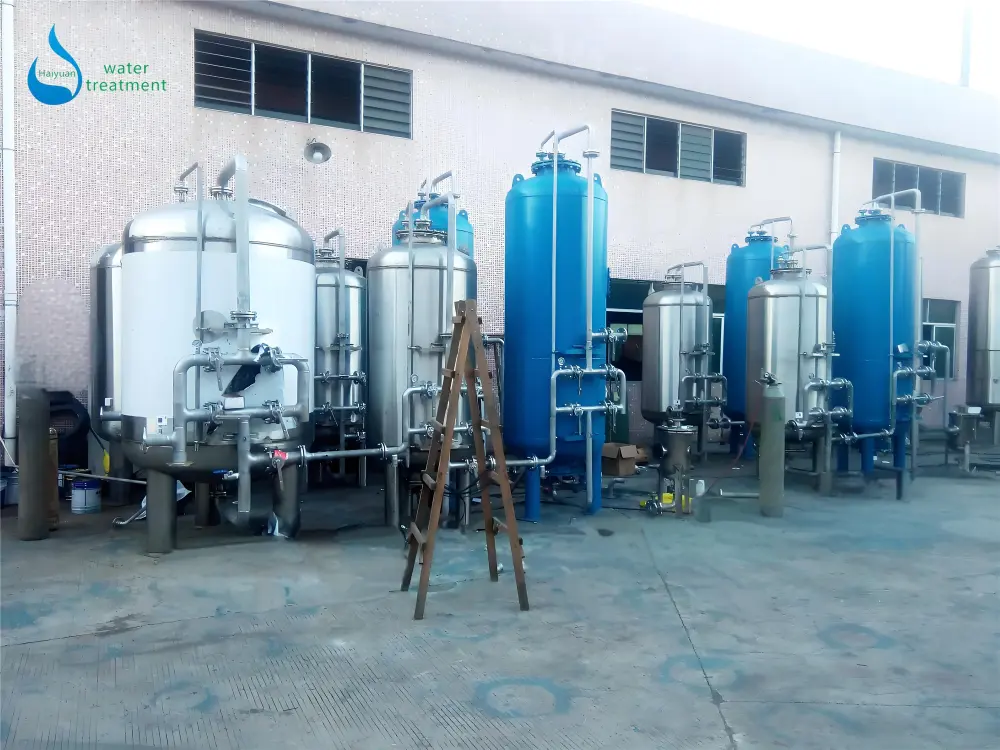
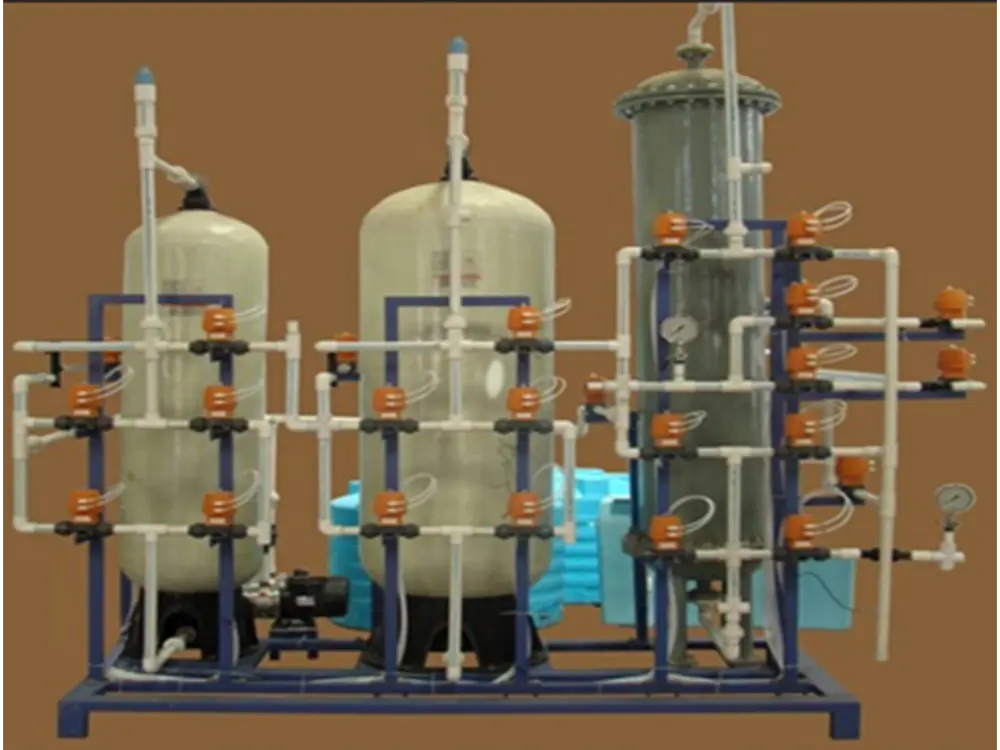
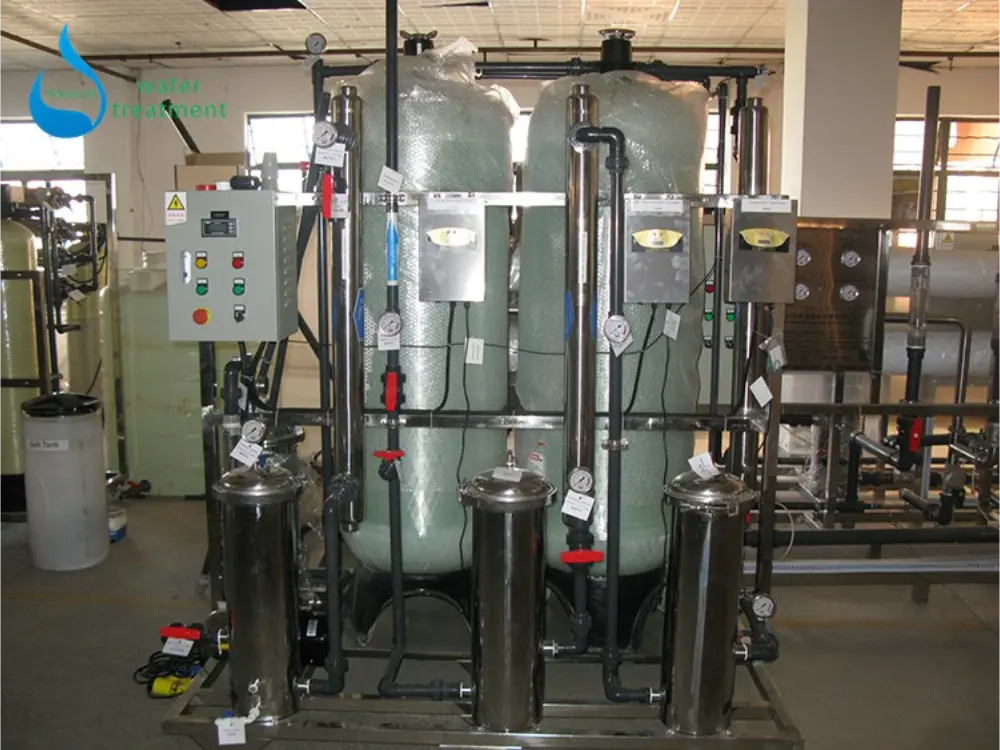
Key Features of an Ion Exchange Plant
-
High-Quality Ion Exchange Resin
The plant uses high-performance resins with large exchange capacities. These resins consume low energy and have a long service life, ensuring reliability, durability, and reduced maintenance costs. -
Reliable Control System
Imported, high-quality control valves ensure smooth operation, making the system safe and efficient with minimal issues. -
Automatic Control for Easy Operation
The system’s fully automatic control offers stable output and simplifies operation. You can adjust the regeneration cycle between 7 to 12 days, and the reduction time is flexible within 24 hours, providing adaptability for varying needs. -
Simple Installation and Operation
Designed for ease of use, the system allows quick installation and efficient daily operation. -
Customization Options
Tailored solutions are available to meet specific requirements, making the system adaptable to a wide range of needs. -
Versatile Applications
The ion exchange plant is ideal for applications in steel, smelting, boilers, air conditioning systems, and heat exchangers. It also serves water treatment needs in hotels, restaurants, office buildings, and industries such as food, beverages, chemicals, and pharmaceuticals.
Applications of Cation Anion Exchange
The cation-anion exchange system is widely used for various applications, providing efficient water softening and treatment solutions:
-
Industrial Uses
Softening make-up water in steam boilers, hot water boilers, switches, and evaporative condensers.Water treatment for air conditioning systems and direct combustion engine systems.
-
Commercial and Residential Use
-
Water softening for hotels, restaurants, office buildings, and apartments.
-
Domestic water treatment for households.
-
-
Industry-Specific Water Softening
-
The system is essential for industries like food, beverages, wine production, laundry, printing and dyeing, chemicals, and pharmaceuticals.
-
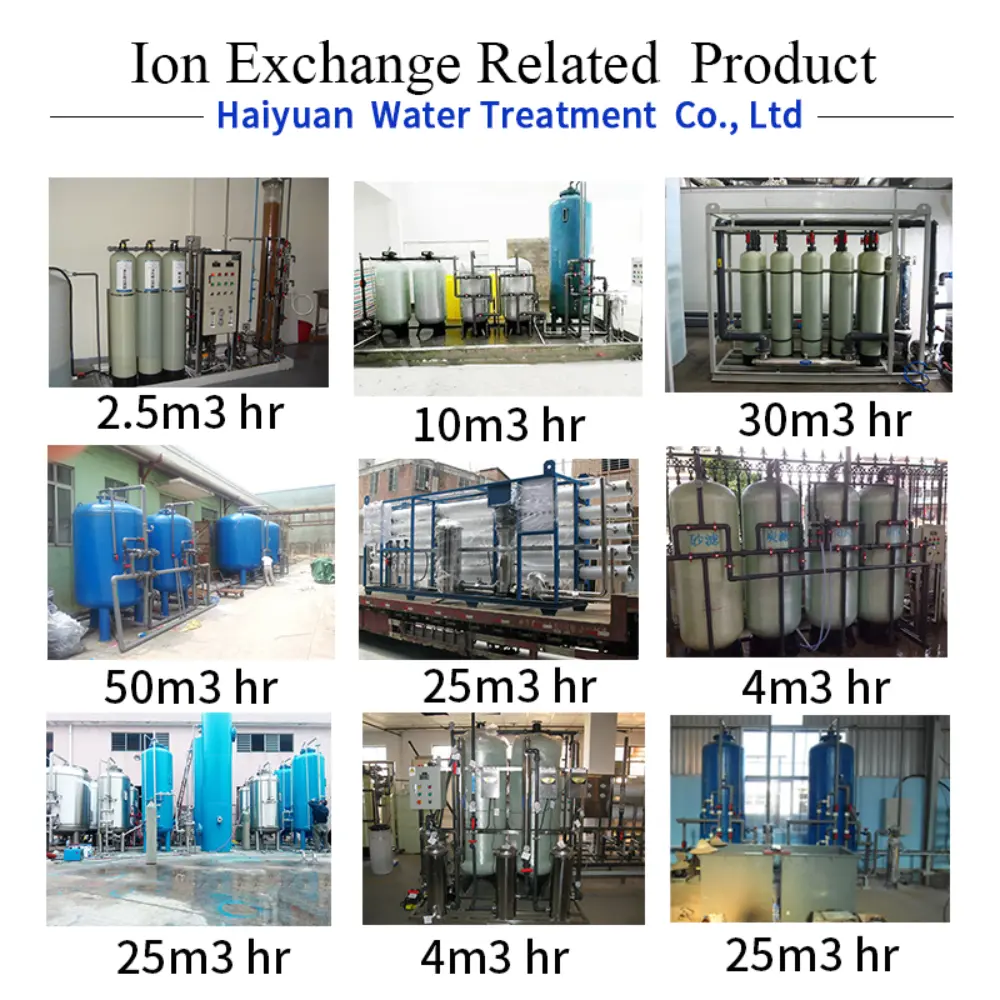
To find the most appropriate for your use, please advise the following information ready
Product water flow rate ( m3/hr, m3/day, Liter/hr,GPM,GPD etc.)
Product water purpose(drinking, irrigation, industry process or others)
Feed Water TDS (Total dissolved solids). Is it from Borehole/salt/brackish/lake water
Power (110/220/380V/415V/460V, 50 or 60 Hz) 3 phase.
It is necessary to make water analysis reprot for borehole water,lake water, seawater.
If soure water is tap water no need end to us TDS or water analysis report.
Contact Us
If you have any questions or requirements, feel free to contact us through the following methods. We are here to provide you with professional advice and assistance:
Or add our contact information directly :WhatsApp:+86 18825874379 email: haiyuan@swroplant.com
